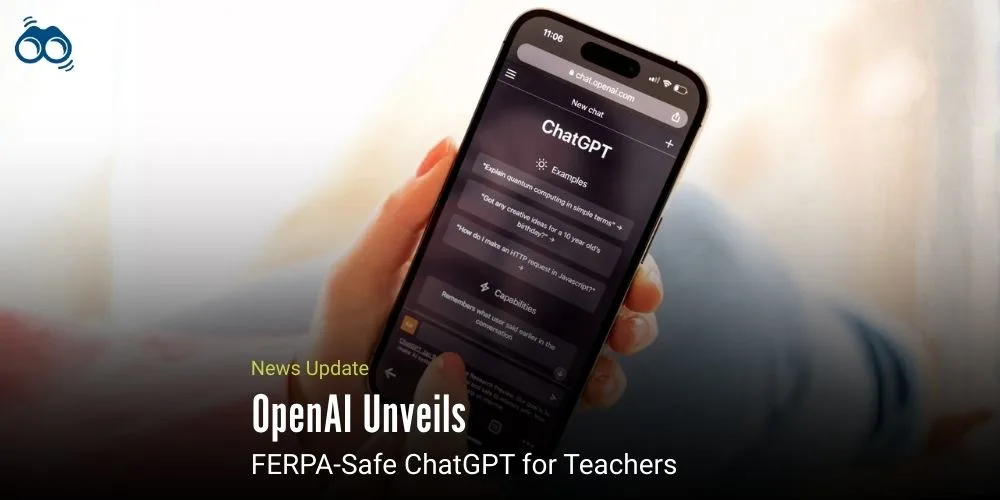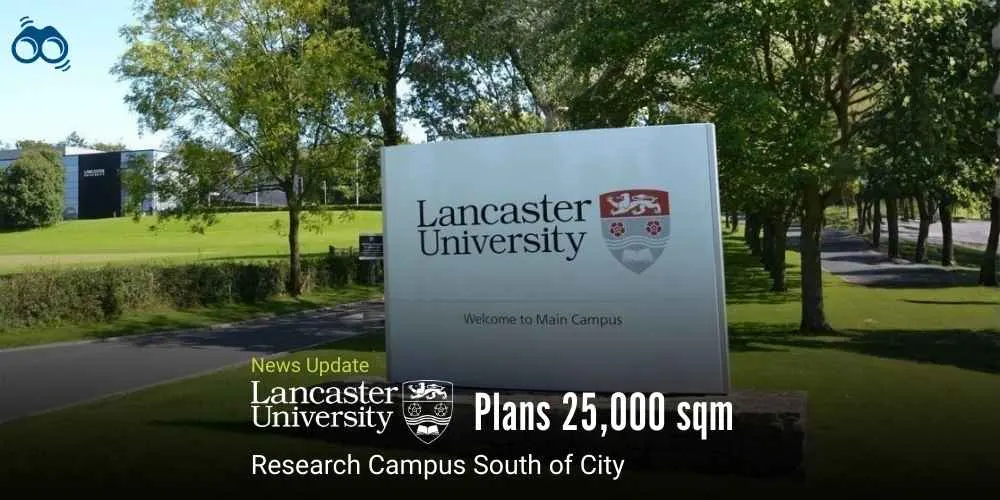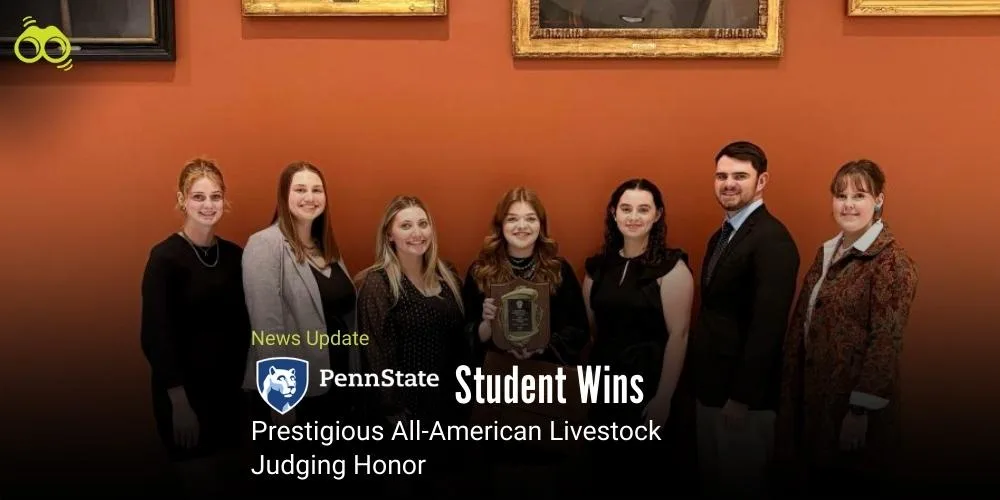FERPA‑compliant ChatGPT for Teachers: What schools need to know
How ChatGPT for Teachers helps educators save time and personalise learning
Artificial intelligence has been transforming education for some time, but concerns about privacy, costs, and classroom application have slowed its acceptance in schools. K–12 teachers would like time-saving tools for personalised learning, but many are still hesitant about how student data is protected. To this end, OpenAI has developed a free version of ChatGPT specially made for the education sector.
The teacher-focused platform features privacy safeguards compliant with FERPA, along with administrative controls for schools and districts. It also has customised features to help teachers plan lessons, collaborate, and engage students effectively.
What is FERPA?
The Family Educational Rights and Privacy Act (FERPA) is a United States law that protects the privacy of student records under the 1974 Act. It provides parents with rights, along with students above 18, to access, inspect, and request amendments in their academic records while restricting schools from disclosing this information. Hence, unless the parents or students above 18 years give written consent, the schools cannot share any personal or academic information, and only identifiable members of the staff with educational needs have access to view.
Compliance also implies maintaining and handling secure school records, preventing any misuse of sensitive information. So when OpenAI says that it is FERPA-compliant, it is a way of saying that the platform follows this strict rule, such that the data of the teacher and student will not be shared or used to train AI models, while the access by the administrators can also be controlled. To put it simply, FERPA compliance operates as a legal shield for giving schools confidence that their privacy is protected while an AI system is being deployed by teachers in the classroom.
An AI Tool for Secure Schools
ChatGPT for Teachers offers a dedicated workspace where educators can use AI to support lesson planning, classroom activities, and collaboration. Since it is built on FERPA-compliant infrastructure, it equates to US data protection laws of the highest order. OpenAI has pledged that teacher data will not be used for training its models, therefore boosting the schools' confidence regarding the adoption of ChatGPT.
A Showcase of Key Teacher Features
Teachers using ChatGPT for Teachers will have access to unlimited messages powered by the GPT-5.1 Auto, OpenAI's latest and most advanced model. There are no restrictions on how much they can use the tool, putting integration of AI into daily teaching activities in an easy, non-distracting way. File uploads, image generation, and app connectors give teachers a practical way to prepare their lessons and create visual materials, as well as link this tool to other apps that they are using. All of these serve to make teachers' everyday activities simple so that teachers can spend less time on preparatory work.
In addition, the tool provides tailored assistance for various levels of grade, subject, and learning style. This allows teachers to customise lessons to meet the varying needs in a classroom so that students may get appropriately designed content based on their respective abilities and interests. In addition, collaboration tools make sharing materials and ideas among teachers with their colleagues from various schools and districts relatively easy. These tools thus foster cooperation to create a connected and resourceful teaching community.
Administrative controls are included for school leaders. These take care of the management of staff access and guarantee responsible use of the platform throughout their institutions. This feature instils confidence in the school that the tool can be rolled out securely and along its policies. AI is already helping teachers save time and improve educational outcomes. According to OpenAI, three out of five teachers are currently using AI, with regular users saving several hours weekly, time that could be spent directly with their students or enhancing the lessons. OpenAI takes off the last barriers in regard to cost, privacy risks, and lack of technical support by ensuring that it freely provides a secure version of ChatGPT. Study Mode and memory tools are a few features that allow further personalisation.
The platform is free for all verified K-12 educators in the U.S. until June 2027, after which OpenAI plans to increase accessibility via partnerships with educational organisations. While it is rolling out in the U.S., this step signals a far wider trend toward education-grade AI tools that will greatly benefit teachers worldwide. Such a launch indicates a growing interest in using AI responsibly in the education sector. ChatGPT for Teachers is practically demonstrating how AI can support, rather than replace, human instruction, with a focus on student privacy, teacher autonomy, and collaborative learning.
Editor’s Note:
The launch of ChatGPT for Teachers is a significant point in the continuing saga of artificial intelligence in education. For years, schools have had their concerns about privacy, cost, and usability in the classroom, hence the reluctance toward AI adoption. With the introduction of a free, FERPA-compliant version of ChatGPT, OpenAI is attempting to lift these barriers and provide teachers with a safe way to explore the potential of AI. This kind of development is relevant because these tools help teachers teach efficiently, save time, provide personalised lessons, and collaborate. With features like unlimited use of the latest GPT model, file uploads, and subject-customised support, teachers devote more time to teaching and less time to administrative chores. Meanwhile, powerful privacy safeguards assure schools that sensitive data will be protected. Equally vital could be the effect on students. They can be supported by tools such as Study Mode and personalised content, while teachers have more time to provide support directly. In this way, AI is positioned gainfully, rather than detrimentally a partner to human teaching, strengthening classroom practice. Such news confirms this broader trend: education-grade AI tools are becoming more accessible and more responsible. If carefully embraced, they could effectively re-engineer the workload and delivery of learning in schools.
Skoobuzz underlines that ChatGPT for Teachers shows how AI can responsibly support both students and professors. Little reminders, then, of how technologies, with strong privacy rules and thoughtfully architected, can directly forward enhancement rather than disruption in education.
FAQs
Q1. What is ChatGPT for Teachers?
ChatGPT for Teachers is a free version of OpenAI’s AI platform designed for K–12 educators. It offers lesson planning support, collaboration tools, and personalised learning features, all built with strong privacy protections.
Q2. How is ChatGPT for Teachers different from the standard ChatGPT?
Unlike the standard version, ChatGPT for Teachers is FERPA‑compliant, meaning student and teacher data is protected under strict US privacy laws. It also includes admin controls for schools and unlimited use of the latest GPT‑5.1 model.
Q3. Why is FERPA compliance important for schools?
FERPA, the Family Educational Rights and Privacy Act, protects student records and limits how schools share personal information. Compliance ensures that sensitive data is secure, giving schools confidence to adopt AI responsibly.
Q4. What features does ChatGPT for Teachers provide?
Teachers can upload files, generate images, connect apps, and access tailored support for different grades and subjects. Collaboration tools make it easy to share resources across schools, while admin controls help leaders manage staff access.
Q5. How does ChatGPT for Teachers benefit students?
By saving teachers' time and reducing administrative tasks, the tool allows educators to spend more time with students. Features like Study Mode and personalised content also help students learn step by step, suited to their abilities.
Q6. Is ChatGPT for Teachers free?
Yes, it is free for verified K–12 educators in the United States until June 2027. OpenAI plans to expand access through partnerships with education organisations, signalling wider availability in the future.
Q7. Will ChatGPT for Teachers replace human teaching?
No. The platform is designed to support teachers, not replace them. It strengthens classroom practice by offering time‑saving tools and personalised learning, while keeping teacher autonomy and student privacy at the centre.














0 Comments (Please Login To Continue)